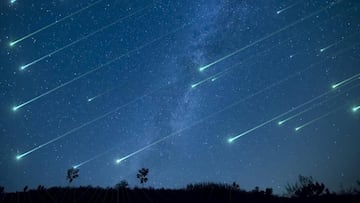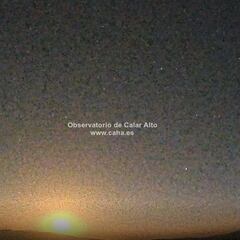Lyrids meteor shower: When is the best time to watch the shooting stars this weekend?
An annual meteorological phenomenon will be streaking across the skies this month. Here’s when and where to catch a glimpse of the Lyrids meteor showers.


Every year the Lyrid meteor shower is visible in the night sky and is usually the cosmic event that breaks the so-called ‘meteor drought’ that typically occurs from January to April.
This year the Lyrids are expected to reach their peak on the night of 22 April at 9:06 p.m. ET, with around 10 meteors per hour visible streaking across clear skies. This is the typical peak but some years has seen huge surges with as many as 100 meteors per hour.
Stargazers across the U.S. can celebrate #EarthDay with one of the night sky's best annual shows: the Lyrids! ☄️ https://t.co/fdl1vLuIUN pic.twitter.com/JH26kHnxo4
— Atlanta & Company (@atlandco) April 20, 2023
If you are lucky enough to have clear skies at night you may be able to catch the show for yourself. Here’s everything you need to know about the Lyrid meteor shower.
When and where will the Lyrid shower be visible?
Experts are expecting the peak of the Lyrids meteor shower to be visible on Saturday night, but the spectacle will actually continue for nearly two weeks. The Lyrids have been active from 15 April to 29 April.
With only between 10-15 meteors per hour at the peak you will need to hope for clear skies to see the shower, but they should be visible anywhere on earth. Fortunately no moon in the sky will make the meteors easy to see.
What to look for if you’re viewing the Lyrid shower
Related stories
If you are desperate to get the best look at this annual occurrence it may help to learn a bit more about the shower’s radiant point, which marks the central spot from which the shower emanates. The meteors tend to stem from the constellation Lyra the Harp, which is where the shower gets its name.
If you don’t fancy the late night option, you may still be able to see signs of the Lyrid shower in the evening. Typically the meteors on show then are termed ‘earth-grazers’, which are slow-moving but long-lasting as they drift across the sky.

